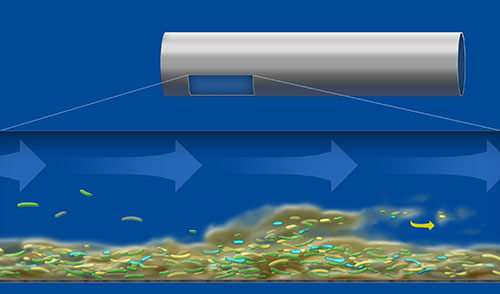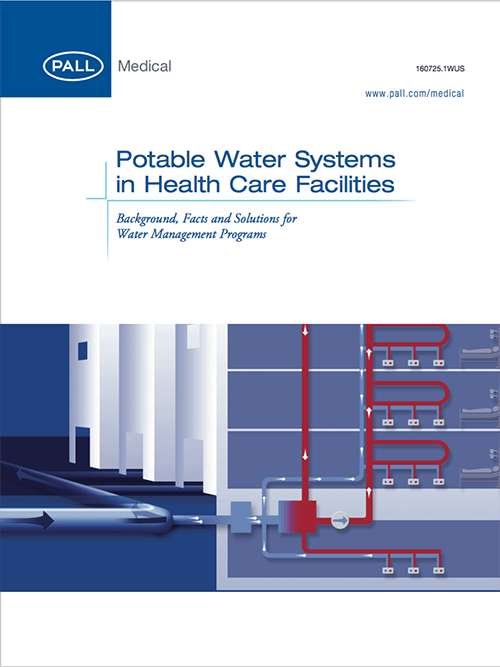What happens to drinking water from its origin to the faucet?
In most circumstances, well-controlled, hygienic water is delivered from water plants to cities. During transport, water is cold and flows continuously through large diameter pipes. However, this situation frequently changes at the point-of-entrance to buildings (1,2). Within buildings, water can stagnate and its temperature increase. It passes through complex internal distribution systems consisting of narrow pipes with possibly corroded inner surfaces and dead ends. This environment can provide optimal conditions for the formation of biofilm from which bacteria and other microorganisms may be continuously released into the water (3-6).
Image 1: Drinking water is derived from lakes, rivers or deep underground. It is purified in water plants and transported underground in large diameter pipes to cities and buildings, where it then often runs through small diameter pipes and may stagnate and warm up. These conditions are ideal for biofilm formation.
What is biofilm and how does it develop?
In water distribution systems biofilm can develop within a few days even if the water meets drinking water criteria (2). Biofilm can host bacteria, amoeba, algae and other microorganisms. Under low flow conditions, such as in dead legs, particularly thick biofilms can form. Under the force of waterflow biofilm can shear off and biofilm particles can colonize other parts of the water distribution system (3). External stress in the pipework, such as disinfection measures, can result in an increased expression of the biofilm phenotype cell which is responsible for the strong attachment of cells to a surface (5).
Image 2: Biofilm establishes in several phases over a few days. It contains microorganisms within its slimy matrix. With increasing thickness, biofilm particles containing large amounts of bacteria are released into the water stream.







